How to Prepare for a Roofing Project
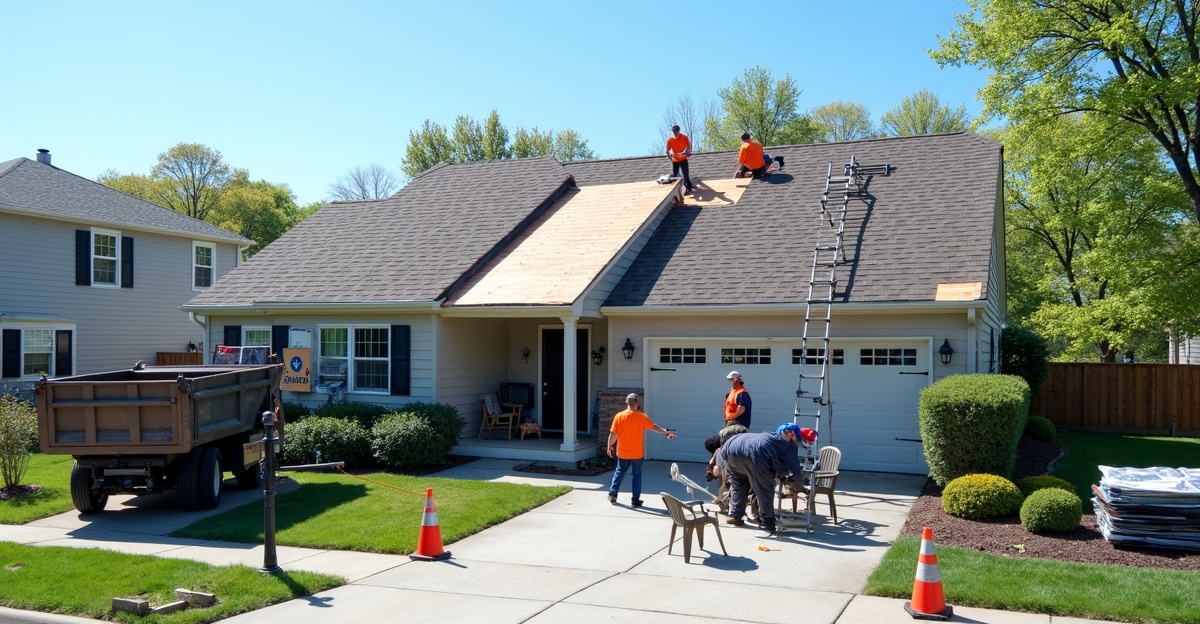
Preparing for a roofing project means more than setting a start date. We need to coordinate permits, confirm the schedule, set safety measures, and get communication in place before work begins. This guide lays out how to get ready so everything moves efficiently from installation to cleanup.
Key Takeaways
- Get permits early and verify schedule details to prevent delays in the project.
- Plan for noise, dust, and limited access during work hours.
- Remove vehicles from the driveway, secure breakables, and clear indoor and outdoor work zones.
- Talk with the contractor to set expectations for access points, timing, and site safety.
- Make sure children, pets, and team members stay clear of active areas to stay safe.
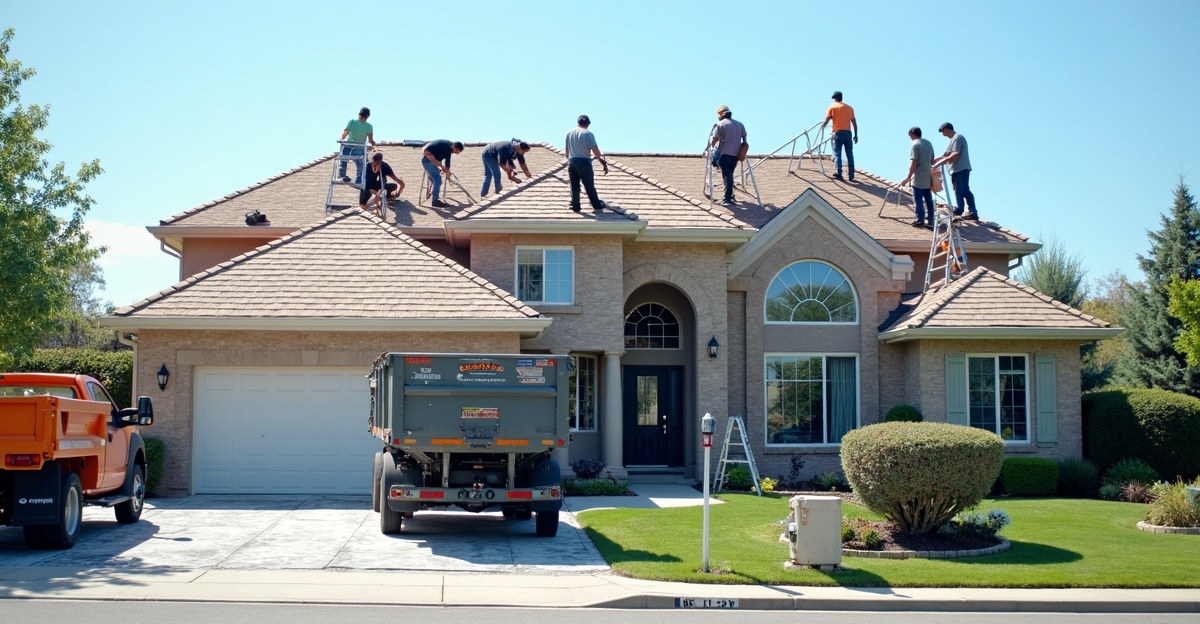
What You Should Expect From a Roofing Project
Roofing work isn’t quiet, and it doesn’t happen in the background. From the first nail to the final cleanup, you can expect a busy stretch of time on your property.
Most jobs start early in the morning and wrap up well before evening, barring weather issues. Crews usually arrive just after sunrise, bringing ladders, materials, and heavy-duty tools. If we’re replacing your roof, a dumpster may be dropped off ahead of time. It’ll stay on-site until cleanup is complete.
You’ll see a mix of skilled professionals—installers, a project manager, sometimes a delivery team—working in sync. The pace is fast, and that’s by design. A tight schedule helps us keep your property protected from unpredictable weather.
Disruptions You Can Expect
Every roofing project comes with a few temporary headaches. Being prepared ahead of time helps minimize stress. Here are the most common disruptions you’ll encounter:
- Noise – The banging and foot traffic are unavoidable during roofing. It gets loud inside, especially in top-floor rooms.
- Debris and dust – No matter how clean our crew works, roofing creates some mess. We protect what we can and do thorough cleanup after.
- Parking and entry changes – Driveways may need to stay clear for trucks or dumpsters. Entryways might be temporarily blocked.
- Limited attic or top-floor access – Crews may need space in your attic to inspect decking or ventilation.
- Weather delays – Florida’s weather can derail plans fast. We monitor forecasts closely but may have to pause work if safety’s impacted.
These aren’t signs something’s going wrong; they’re part of how it gets done right. For a deeper look into the daily flow, check out our guide on what to expect during roof installation.
Tips to Keep Your Home or Business Running Smoothly
Getting your property ready isn’t hard, but a little planning goes a long way. Here’s what we recommend.
For homeowners:
- Move vehicles away the night before. Your driveway may be blocked by morning.
- Secure pets and kids. Noise and workers can stress animals, and roof zones aren’t safe play areas.
- Take down wall hangings or fragile décor, especially on top floors. Vibrations sometimes knock things loose.
- Cover or relocate belongings in attics or garages where dust might settle.
- Plan quieter activities away from home during peak work hours if you’re sensitive to noise.
For business owners:
- Notify your staff and tenants. Let them know what access points will be blocked or where equipment might be staged.
- Coordinate deliveries or customer appointments around roofing hours.
- Let us know your hours. We work to reduce interruptions, especially if you need specific areas quiet or clear at certain times.
We’re used to working on active properties and do our best to minimize hassle. That said, there will be some disruption. The key is knowing what’s normal and staying flexible. If you ever feel unsure about timing, check out our full roofing project timeline.
Hold off on major home projects during roofing days—especially indoor jobs that rely on quiet or open access to the attic. If you’re swapping siding or HVAC systems, it’s smart to sequence those carefully.
Also, don’t wait until the last minute to get legal items in order. If you live in Florida, permits are usually required. We handle that part for you, but if you’re curious about the process, take a look at how roof replacement permits work in Florida.
A roofing project can change how you move through your space for a few days—but once we’re done, you’re left with security, energy savings, and peace of mind that lasts for years. If you want to learn what separates a quality job from a shortcut, we lay it out clearly in our post comparing DIY vs. professional roofing approaches.
And if you’re still in planning mode and not sure who to hire, keep this in mind: how you start the process shapes how it ends. So before signing anything, take five minutes to read how to choose a reliable roofing contractor. It could save you weeks of regret later.
For residential or commercial jobs, we keep things tight, smart, and done right—from prep to clean up. If you’re ready to move forward, see how we handle every detail with our roof replacement service.
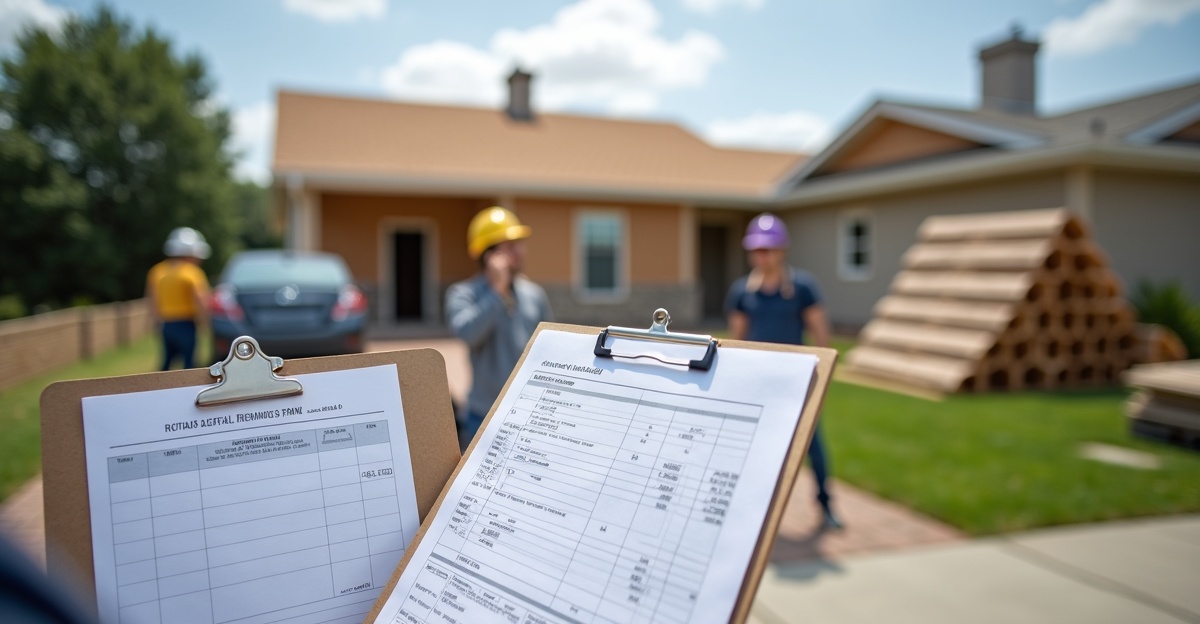
Plan Ahead: Permits, Scheduling & Budget Clarity
Handle Permits Early and Stay Ahead of Delays
Starting any roofing job without the green light from your city or HOA can stall everything fast. Some locations take two to three weeks to review roofing permits, longer if you’re in a historic district or a regulated HOA community. We’ve seen too many projects pushed back just because paperwork sat in someone’s inbox.
That’s why one of the most important steps before roof installation is knocking out permits early. We handle permit coordination on all our jobs, but if you’re managing parts on your own, make sure local approval timelines don’t catch you off guard. For Florida projects, this guide on roofing permits can help you understand what’s required.
Lock in the Schedule and Control the Budget
Once permits are squared away, the next step is locking in a schedule that works—for you and those who live or work in the building. For homeowners, that may mean alerting the family, planning time off, boarding pets, or making room in the driveway. For property managers, it likely involves tenant notices, redirecting foot traffic, and updating security or operations staff.
Here are a few key scheduling insights to keep things tight and efficient:
- A typical residential roof replacement takes 1–3 days.
- Commercial jobs can run 1–2 weeks depending on square footage, complexity, and weather.
- Weather plays a big role—schedule during drier months if possible.
- Final walkthroughs and inspections may require your presence—don’t plan travel that week.
You’ll also want a clear picture of project costs going in. No guesswork. No clauses that swing your budget without warning. We provide solid estimates upfront—with all materials, labor, disposal, and taxes included. Before you sign, be sure to ask your roofing contractor what could change the cost mid-project. Things like decking damage, structural repair, or material upgrades can shift the price, but they shouldn’t catch you off guard. Our approach gives you that clarity on day one.
If you’re unsure what to expect during the install itself, this breakdown of the roofing process explains every phase from tear-off through cleanup.
To avoid hiccups, it’s smart to choose a contractor who plans right along with you—not days before the crew shows up. If you haven’t yet, check out our tips on choosing the right roofing contractor so you’re working with someone who values straight answers and smooth delivery.
If you’re looking to get your job on the calendar, start by exploring our roof replacement services or reach out for a quote through our contact page. We’re ready when you are.
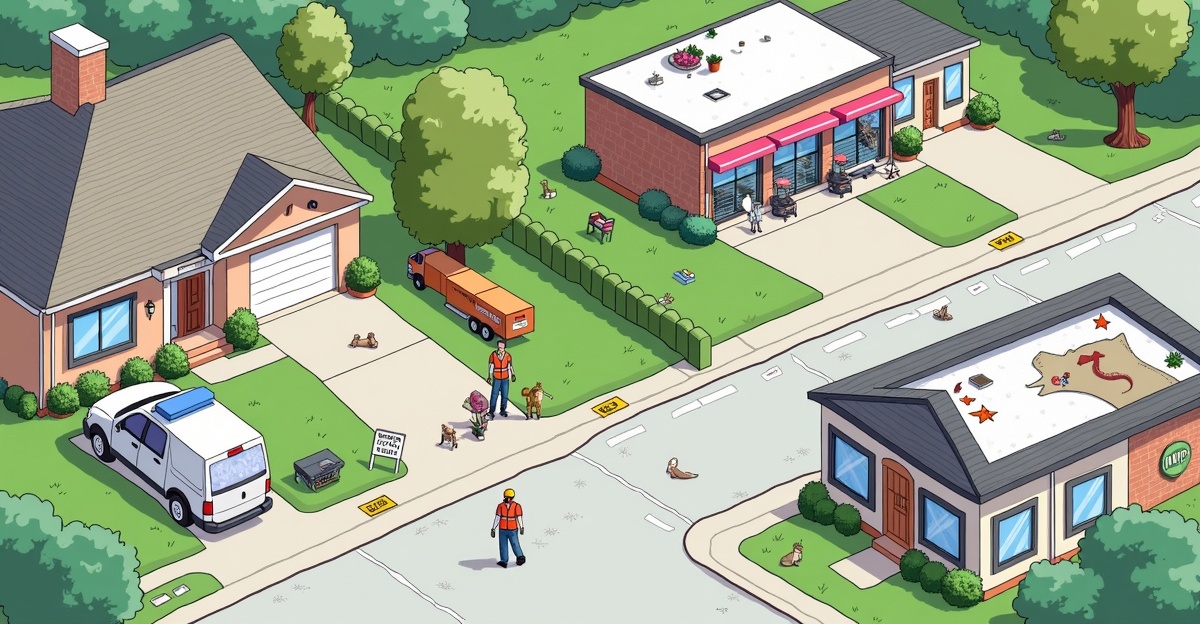
Secure the Site: How to Prepare the Property (Inside & Out)
Getting your property ready before roofing starts makes the work safer, quicker, and less disruptive. Whether you’re dealing with a home or a business, a few clear steps can make all the difference.
Checklist for Residential and Commercial Properties
If you’re preparing your property for roofing work, here’s what we recommend based on the type of space:
Residential Roof Preparation
Before your crew arrives, take care of the following to avoid damage and create room for debris and equipment:
- Move grills, patio furniture, and potted plants at least 15–20 feet from the exterior walls.
- Remove wall art, mirrors, or anything fragile hanging inside—roofs pound, and walls shake.
- Cover items in the attic or top floor ceilings. Dust and debris can sneak in during removal or install.
- Let household members and pets know what to expect. Keep animals confined and away from entrances.
- Make room in the driveway for dumpster delivery or material drop-offs.
Commercial Roofing Preparation
We know time is money, so upfront coordination matters:
- Clear out loading zones, parking close to the building, or any area that could serve as a staging zone.
- Let your facilities and security teams know the project timeline—they’ll need to manage building access.
- Post signage and notify staff of temporary off-limits zones, especially roof or perimeter access.
- Secure rooftop-mounted equipment or utilities in coordination with your roofing contractor.
For every roof job—residential or commercial—we recommend tidying up landscaping too. Trim back tree limbs and any tall shrubs touching the house or building to speed up the crew’s work and keep damage to a minimum.
Protecting your home’s interiors matters too. Even the best roofers cause some shake during tear-off and install. Use tarps or old sheets to protect furniture, electronics, or anything tucked under ceiling spaces. If you’ve got breakables in your attic or mounted light fixtures in second-story rooms, secure or shield them before work kicks off.
We kick off every job with a full walk-through of the property. This isn’t just good practice—it helps flag anything site-specific you might miss. At RayPro, flagging potential concerns early is one way we avoid costly hiccups later.
If you’re looking for an in-depth look at the process itself, check out our simple guide on what to expect during a roof replacement for more insight.
If you haven’t booked yet and need expert help, our team can walk you through the steps. Visit our roof replacement service page to get started with trusted professionals who plan ahead.

Communication Is Everything: Stay Synced With Your Contractor
Clear, honest communication keeps roofing projects on track. Before work starts, align on key details like your start date, projected timeline, crew arrival times, staging areas, and access points around the property. We always share that upfront during our planning visit—and we make sure you know what to expect every step of the way.
Set expectations early. Emergencies can happen, and you’ll want a clear way to reach your contractor quickly if something comes up. That’s why we provide a direct number for your project lead. We also recommend settling on a primary point of contact from your side too—one person who can field updates and decisions. It keeps communication tight and avoids crossed wires when schedules shift.
Checklist and Best Practices for Smooth Communication
To keep things smooth, we suggest building a clear list of questions and topics to hit before the first shingle gets touched. We hand out a prep checklist to every customer, but here are the essentials:
- Confirm your start and end dates, including buffer days for weather.
- Get the daily work hours and how early crews will arrive.
- Identify where materials will be staged and which doors or gates need access.
- Ask how the crew will secure your home each day and clean up before leaving.
- Clarify where to direct questions—don’t assume every crew member can make decisions.
This prep work helps everyone feel ready. During the job, we stick to a few best practices that make a big difference:
- Daily check-ins from the crew leader to share progress or unexpected changes
- Clear on-site signage to mark off work zones and entrances (especially important on commercial properties)
- Quick status updates by text or phone, even if it’s just “on schedule”
If you’re working with a larger commercial team, regular updates help you keep stakeholders in the loop. For homeowners, it’s all about peace of mind—nobody likes surprises when a team’s working just above your ceiling.
We set realistic schedules from the start. But Florida weather doesn’t always cooperate. If storms or material delays push your timeline, we’ll let you know right away and walk you through the next steps. Staying synced helps prevent stress and costly missteps.
If you’re curious about how long roof jobs usually take, check out our full breakdown on this roof replacement timeline guide.
We believe planning and transparency are just as important as shingles and hammers. So whether you’re replacing a home roof or coordinating a large-scale upgrade, sticking with contractors who value strong communication gives you the control and clarity you need.
Get help from a team who knows how to handle every phase. Explore our roof replacement services to start planning with confidence.
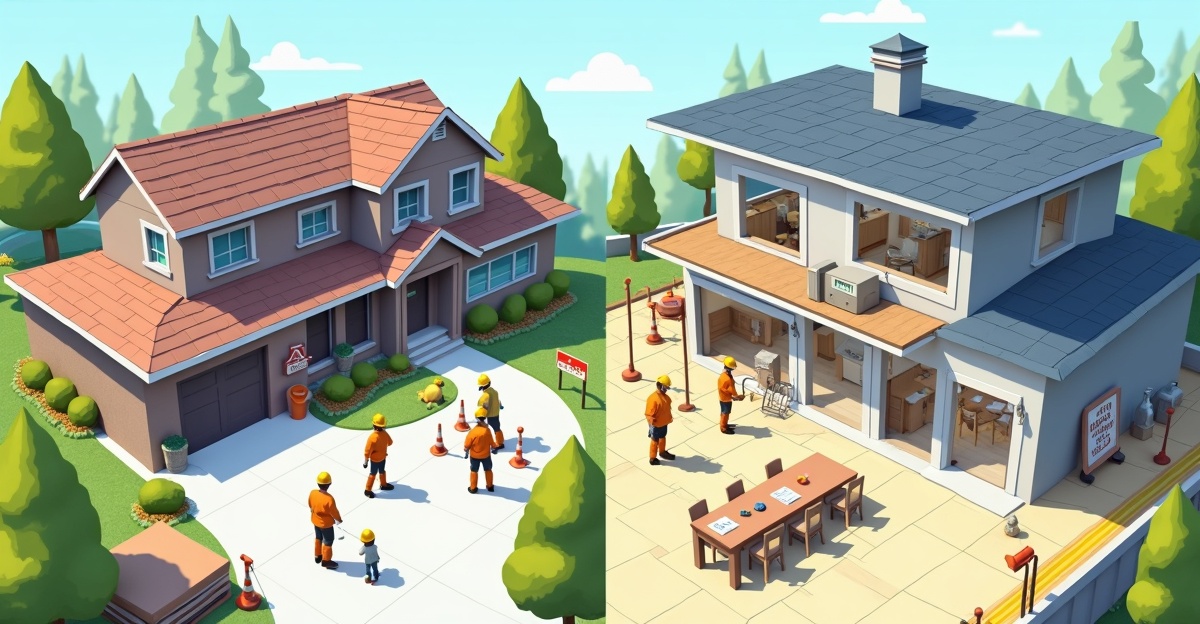
Safety First: Protect People, Pets & Property
Even a well-managed roofing project brings real safety concerns. There’s falling debris, sharp tools, open decking, and ladders in constant use. Whether we’re working on your home or business, keeping the area secure should be the first priority. That starts with knowing the risks and having a clear, practical game plan to avoid them.
Simple Steps to Keep Your Space Safe
Here’s how we recommend managing safety from start to finish—whether you’re planning for a residential roof replacement or a commercial repair job.
For Homeowners:
- Keep kids and pets indoors or arrange for them to stay offsite.
- Let everyone in your household know which areas are off-limits.
- Store outdoor furniture, toys, and grills in the garage or away from the house.
- Let us know about any fragile landscaping, sprinkler controls, or outdoor decorations we should be aware of before we start.
For Businesses:
- Block off access to upper floors or interior areas directly under the construction zone.
- Post safety signs or temporary notices indoors to redirect foot traffic.
- Limit roof access to authorized personnel only.
- Remove important equipment or documents from rooms under active work unless otherwise protected.
Because every property is different, we always explore job-specific risks before we begin. But if you spot anything we might not notice—like low-hanging wires, antique fixtures, or vents that connect to clean rooms—be sure to point those out during the walk-through.
Good Communication Prevents Most Accidents
Accidents usually happen when expectations aren’t clear. That’s why we always recommend property owners take a few minutes to go over the site layout and expectations with their roofing team. Temporary barriers, cones, and warning tape can go a long way when placed early. For more ways to plan, check out our guide on what to expect during a roof replacement.
We also follow OSHA-compliant safety practices on every job. Our crews go through site-specific training and are equipped to keep the space safe for everyone. That means marked work zones, proper ladder placement, personal safety equipment, and the know-how to minimize disruption beneath the work area.
Make Hazards Known Before Work Begins
Sometimes the biggest risks aren’t visible from the roofline. That’s why we encourage clients to share any hazards—like electrical panels, satellite cabling, security systems, or delicate landscaping—before the project starts. Calling attention to these spots early helps us avoid issues and adjust the work plan right away.
If there’s anything you’re unsure about, we’re always available to walk the site again with you. Protecting your people and property is part of how we’ve earned our reputation for thorough, safe roofing jobs. You can explore more residential roof preparation best practices through our services.
The safest jobs are the ones with good planning, open communication, and reliable crews. We handle the risk so you can focus on the outcome—whether that’s a new commercial install or a family home with fresh shingles and peace of mind.
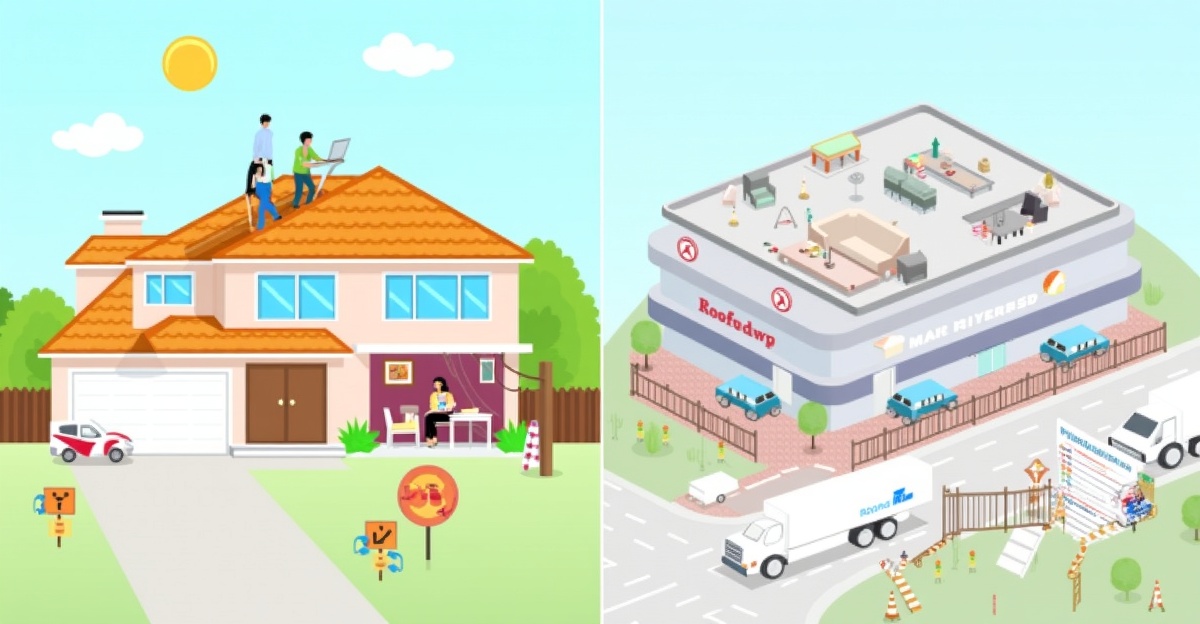
Minimize Disruption & Keep Things Running Smoothly
Things move fast once roof work starts. Whether you own a home or manage a business, a little prep goes a long way toward saving time, reducing stress, and keeping everyone safe. Here’s how we recommend you handle the disruption while staying on track.
Build a Clear Plan & Set Expectations
Before any materials hit the site, step one is to draft a simple plan. For homes, that might just mean choosing which rooms to avoid during noisy hours. For businesses, it means sitting down to map a timeline that won’t interrupt daily operations.
We often work alongside commercial clients to outline project phases and plan around peak hours. That schedule usually includes setup time in the early mornings, tear-off and install windows, and cleanup periods. It doesn’t have to be complicated—just clear.
You’ll also want to:
- Block out buffer days for weather: Rainy seasons can delay starting or finishing the job. We recommend working in some cushion around your target dates.
- Add rest days around major parts of the job: such as tear-off or inspections, especially before reopening areas to traffic or daily business.
If you’re unsure how long a typical job takes, check out our guide on the full roof replacement timeline.
Protect People, Property & Schedule
Once your start date is locked in, turn your attention to the space under the roof. The work overhead can affect what’s inside—and who’s there.
Here’s how we recommend preparing for common disruptions:
For Homeowners:
- Expect early morning noise: Most crews start by 7–8 a.m. If you’re working from home or have kids or pets, consider alternate plans—at least for tear-off day.
- Move delicate items away from walls or ceilings: Vibrations from hammering and movement on the roof can cause things to rattle or fall inside. Take down art, mirrors, or shelves on upper floors.
- Clear the driveway: Give space for the crew’s equipment and drop zone for debris.
For Commercial Buildings:
- Post signage to redirect people: Modify customer routes and create safe access for employees.
- Protect intake locations: HVAC systems and server vents can get clogged with dust and debris—cover and monitor these areas.
- Adjust delivery schedules: Let vendors know when access may be limited and plan around service interruptions.
Need help building a checklist? Our team has created a detailed guide that’s great to follow along—see our full roof replacement checklist.
Store Equipment Safely
Construction has ripple effects indoors, too. Whether it’s noise, movement, or airborne dust, some items are better off stored temporarily.
- Residential homes: Protect artwork, valuables, and breakables. If you have an attic, remove items that might be exposed to falling debris or vibration.
- Commercial facilities: Cover or relocate high-sensitivity equipment in work areas. Computers, lab instruments, or anything with a vent intake could be impacted.
It’s also smart to back up data or power down gear near the roof edge just in case material or tools shift unexpectedly.
Keep It Moving Rain or Shine
Roofing in Florida means thinking about the weather—especially in summer. Storm cells can delay work by hours or days. We recommend scheduling during drier seasons whenever possible. If that’s not realistic, we build in padding around active construction so that progress stays on track.
If timelines shift due to weather, we stay in close contact. Our goal is always to protect your home or facility and avoid leaving you covered by only underlayment or tarp overnight. We also stay up to date on local schedules for required roof replacement permits so compliance doesn’t stall your project.
For more insight into whether it’s smarter to tackle some tasks yourself or leave it to pros, check out our write-up on DIY vs. professional roofing.
If you’re planning a new installation or lining up a commercial re-roof, we’re here for that too. Learn how we handle roofing services focused on safety, uptime, and lasting results.
